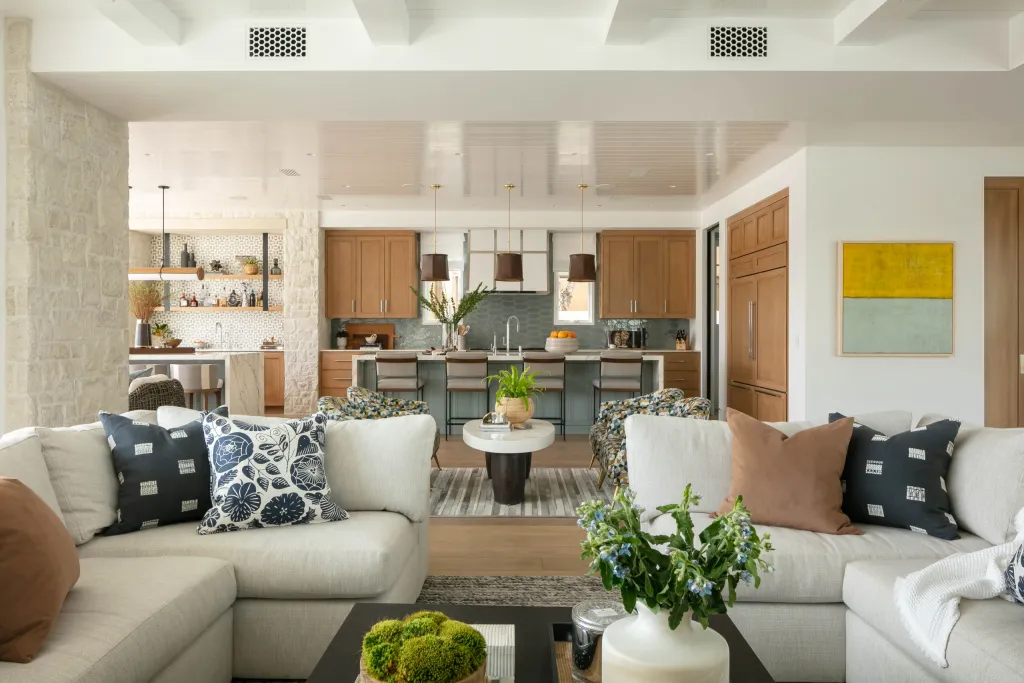
Bringing plants into your home is one of the easiest ways to add life, color, and calm to your space. But when done wrong, it can start to feel more like a jungle than a sanctuary. If you’re craving that lush, lived-in look but don’t want to trip over pots or fight for sunlight, here’s how to incorporate greenery in your home, without overcrowding it.
1. Start With a Plan, Not a Purchase
Impulse-buying a dozen plants might feel exciting, but it often leads to clutter. Instead, take a quick inventory of your space. Notice areas with natural light, spots that feel a little dull, or corners that could use softening. Choose plants that fit those spaces rather than forcing plants where they don’t belong.
Tip: Use your floor plan the way you would for furniture. Visualize where greenery can enhance, not overtake.
2. Think Vertically
No floor space? No problem. Go up. Wall-mounted planters, macramé hangers, and tall plant stands give you a way to add visual interest and greenery without losing square footage. This is especially helpful in smaller apartments or homes where every inch counts.
Try this: A cascading pothos in a hanging pot near a window can bring life to a blank wall without touching your furniture.
3. Use Multipurpose Furniture
There are clever furniture pieces out there that double as plant holders—think side tables with built-in planters or benches that can cradle leafy friends. These pieces help you decorate without “adding” anything new to the room in terms of clutter.
Pro tip: Opt for neutral-toned containers to keep the look streamlined and cohesive.
4. Group Small Plants Strategically
Instead of scattering tiny plants all over the house (which can end up looking chaotic), create small, intentional groupings. A trio of small succulents or air plants on a tray adds charm without chaos. Grouping also makes it easier to water and care for them.
Design tip: Odd numbers (three or five) tend to look more natural and balanced than even-numbered groupings.
5. Use Shelving to Your Advantage
Bookshelves, open kitchen shelves, or even bathroom nooks are perfect spots for plants. Slide in a snake plant, a trailing ivy, or a mini fern to soften the look of books and decor. This approach integrates greenery with items you already use and love, without adding bulk.
6. Pick Low-Maintenance, High-Impact Plants
If you’re short on space, you want each plant to count. Choose varieties that grow upright or stay compact. Good choices include:
ZZ Plant – stylish, resilient, and compact
Fiddle Leaf Fig (dwarf version) – bold without sprawling
Sansevieria (Snake Plant) – vertical and sleek
Pilea – quirky leaves, small footprint
Less is more when your greenery stands out.
7. Rotate Seasonally
Just like you change out throw pillows or decor with the seasons, you can rotate your plant placement. Maybe the sun hits a different room better in summer. Maybe you want to highlight a blooming peace lily in spring. Rotating plants keeps your space fresh and prevents any one area from becoming overrun.
8. Use Mirrors to Reflect Greenery
This is a visual trick that makes your space feel fuller without actually adding more plants. A strategically placed mirror near a plant will double the visual impact, without adding anything else to the room.
Final Thoughts
You don’t need a jungle to enjoy the benefits of indoor greenery. By choosing the right plants, placing them smartly, and working with the flow of your home, you can bring nature indoors in a way that feels balanced, intentional, and inspiring.
Adding plants is about creating joy and breathing room, not just filling space. Keep it simple, and your home will thank you.
The post How to Incorporate Greenery in Your Home Without Overcrowding appeared first on Decorology.

